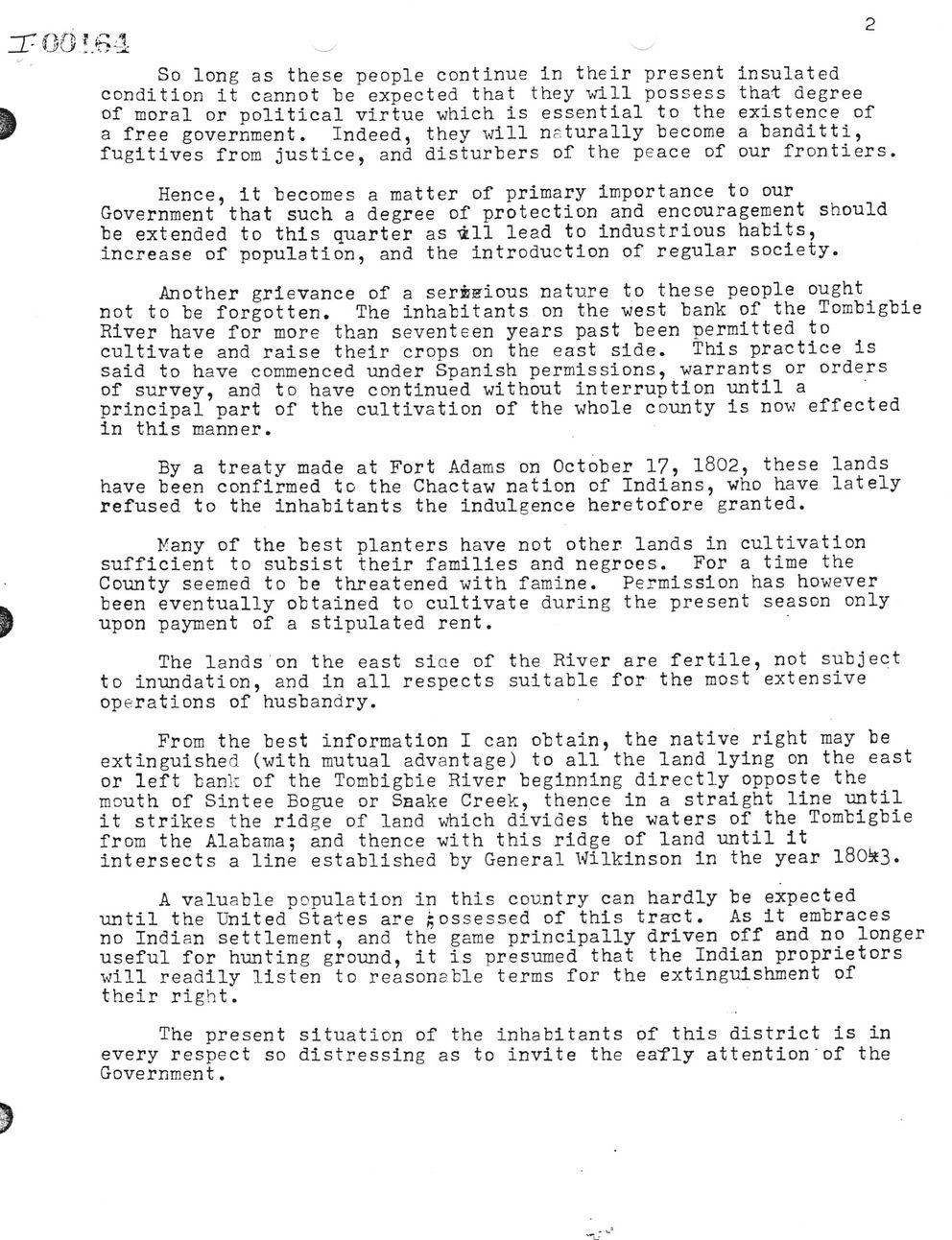This text was obtained via automated optical character recognition.
It has not been edited and may therefore contain several errors.
So long as these people continue in their present insulated condition it cannot be expected that they will possess that degree of moral or political virtue which is essential to the existence of a free government. Indeed, they will naturally become a banditti, fugitives from justice, and disturbers of the peace of our frontiers. Hence, it becomes a matter of primary importance to our Government that such a degree of protection and encouragement should be extended to this quarter as -ill lead to industrious habits, increase of population, and the introduction of regular society. Another grievance of a serB^ious nature to these people ought not to be forgotten. The inhabitants on the west bank of the Tombigbie River have for more than seventeen years past been permitted to cultivate and raise their crops on the east side. This practice is said to have commenced under Spanish permissions, warrants or orders of survey, and to have continued without interruption "until a principal part of the cultivation of the whole county is now effected in this manner. By a treaty made at Fort Adams on October 17, 1802, these lands have been confirmed to the Chactaw nation of Indians, who have lately refused to the inhabitants the indulgence heretofore granted. Many of the best planters have not other lands in cultivation sufficient to subsist their families and negroes. For a time the County seemed to be threatened with famine. Permission has however been eventually obtained to cultivate during the present season only upon payment of a stipulated rent. The lands on the east siae of the River are fertile, not subject to inundation, and in all respects suitable for the most extensive operations of husbandry. From the best information I can obtain, the native right may be extinguished (with mutual advantage) to all the land lying on the east or left bank of the Tombigbie River beginning directly opposte the mouth of Sintee Bogue or Snake Creek, thence in a straight line until it strikes the ridge of land which divides the waters of the Tombigbie from the Alabama; and thence with this ridge of land until it intersects a line established by General Wilkinson in the year 180&3. A valuable population in this country can hardly be expected until the United States are possessed of this tract. As it embraces no Indian settlement, and the game principally driven off and no longer useful for hunting ground, it is presumed that the Indian proprietors will readily listen to reasonable terms for the extinguishment of their right. The present situation of the inhabitants of this district is in every respect so distressing as to invite the eaTly attention of the Government.

Alabama Gulf-Coast-19th-Century-Notes-02